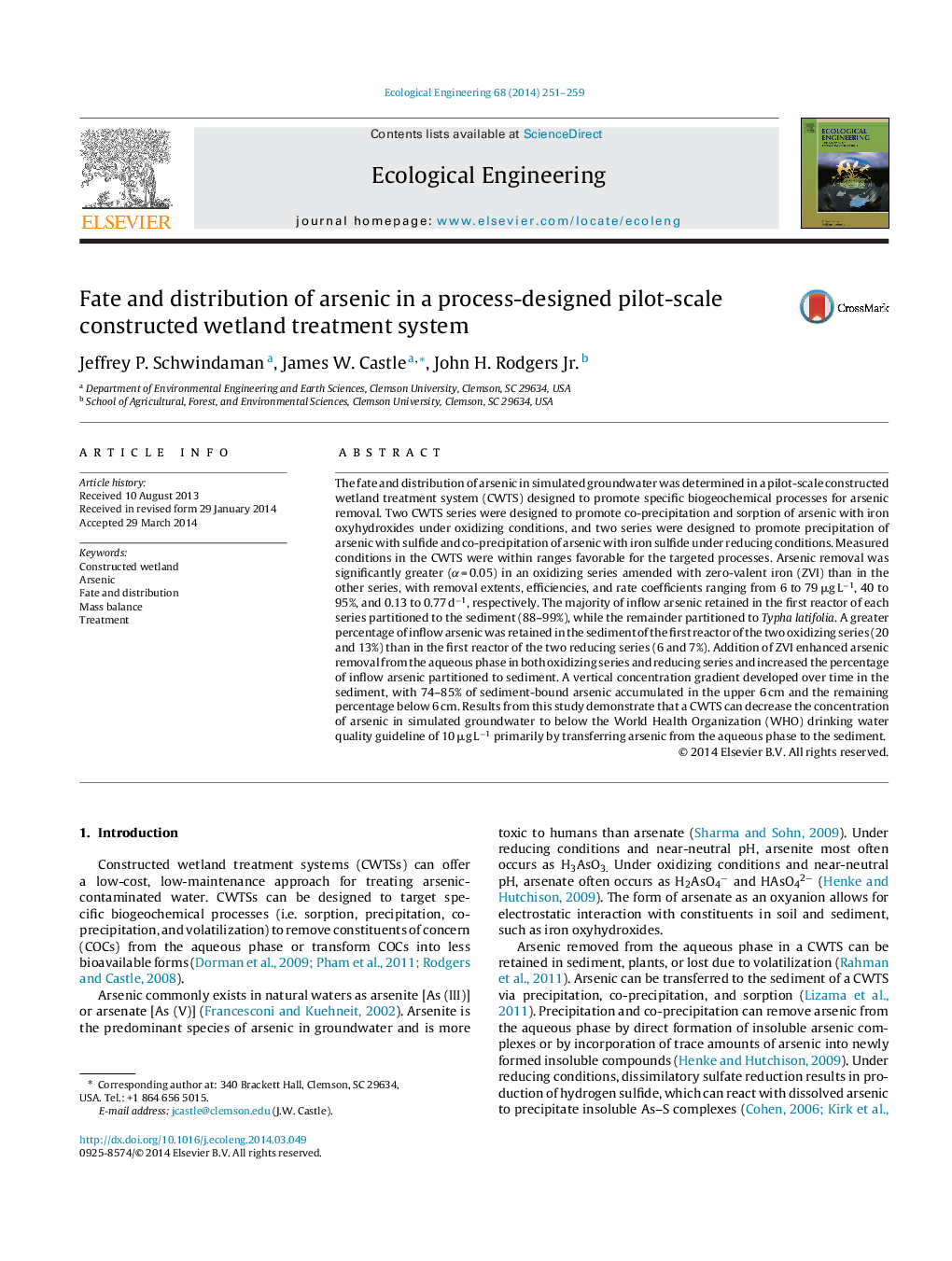| Article ID | Journal | Published Year | Pages | File Type |
|---|---|---|---|---|
| 6302330 | Ecological Engineering | 2014 | 9 Pages |
Abstract
The fate and distribution of arsenic in simulated groundwater was determined in a pilot-scale constructed wetland treatment system (CWTS) designed to promote specific biogeochemical processes for arsenic removal. Two CWTS series were designed to promote co-precipitation and sorption of arsenic with iron oxyhydroxides under oxidizing conditions, and two series were designed to promote precipitation of arsenic with sulfide and co-precipitation of arsenic with iron sulfide under reducing conditions. Measured conditions in the CWTS were within ranges favorable for the targeted processes. Arsenic removal was significantly greater (α = 0.05) in an oxidizing series amended with zero-valent iron (ZVI) than in the other series, with removal extents, efficiencies, and rate coefficients ranging from 6 to 79 μg Lâ1, 40 to 95%, and 0.13 to 0.77 dâ1, respectively. The majority of inflow arsenic retained in the first reactor of each series partitioned to the sediment (88-99%), while the remainder partitioned to Typha latifolia. A greater percentage of inflow arsenic was retained in the sediment of the first reactor of the two oxidizing series (20 and 13%) than in the first reactor of the two reducing series (6 and 7%). Addition of ZVI enhanced arsenic removal from the aqueous phase in both oxidizing series and reducing series and increased the percentage of inflow arsenic partitioned to sediment. A vertical concentration gradient developed over time in the sediment, with 74-85% of sediment-bound arsenic accumulated in the upper 6 cm and the remaining percentage below 6 cm. Results from this study demonstrate that a CWTS can decrease the concentration of arsenic in simulated groundwater to below the World Health Organization (WHO) drinking water quality guideline of 10 μg Lâ1 primarily by transferring arsenic from the aqueous phase to the sediment.
Related Topics
Life Sciences
Agricultural and Biological Sciences
Ecology, Evolution, Behavior and Systematics
Authors
Jeffrey P. Schwindaman, James W. Castle, John H. Jr.,
